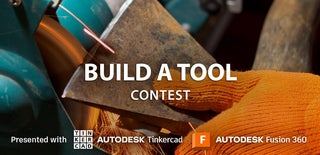Introduction: Jigs for Drilling Rods, Bolts, Nails, Screws, Shafts, Nuts Etc.
It's usual practice for DIY fans to make holes in rods, screws, shafts, nuts etc. I don't have a boring mill at my home, just a screwdriver 12V, so I had problems when I wanted to do it. My screwdriver walks across a rod and does not want to keep a direction.
I found a solution with my 3d printer by designing a drill conductor every time when I need to make a hole in a small metal stuff.
At the beginning, I was going to use special steel bushings that are usually used in drill conductors but I caught an idea to use bearings for fixings a drill in a certain position.
Below I am demonstrating how to make a perfect hole in a screw or in a nut by my conductor.
Supplies
- 3d printed parts for the conductor (models are attached)
- 2 bearings with an internal diameter equal to your drill diameter
- Screws
Step 1: Prepare STL Files
Download Fusion360 model files and fill out Favorite parameters (see screenshot).
Open 3d view and make sure it looks as expected.
Export STL files by menu File -> Export
Step 2: Print 3d Models
For the nut conductor, you need to print two pieces of the model.
The rod conductor is a solid part.
Use different parameters according to your requirements. For big screws and nuts use 1.2 - 3 mm for walls to fix them hard.
Step 3: Reinforcement of the Rod Conductor (Optional)
I crashed my screw conductor 2 times so I decided to add some reinforcements to make it stronger. Usually, the vibration of a drill breaks the conductor closely to the rod's hole. So I added reinforcement slots and you can fill them with thin screws. Also, you can specify your own size of the reinforcement screw in the Params spreadsheet (see the Step 1).
Step 4: Assembly of the Rod (Screw) Conductor
Place the bearings into the rod conductor and it's ready to be used.
Step 5: Assembly of the Nut Conductor
The nut conductor contains of two parts so it should be assembled every time you want to use it. You can use screws M3 or use a vise to fix all parts together.
Step 6: Test... Drilling...
Now it's time to test it out. I use my usual 12V screwdriver with a 3mm drill for metal. It takes 2-3 mins to make a perfect hole. I hold it with my hands without any special vise.

Runner Up in the
Build a Tool Contest















